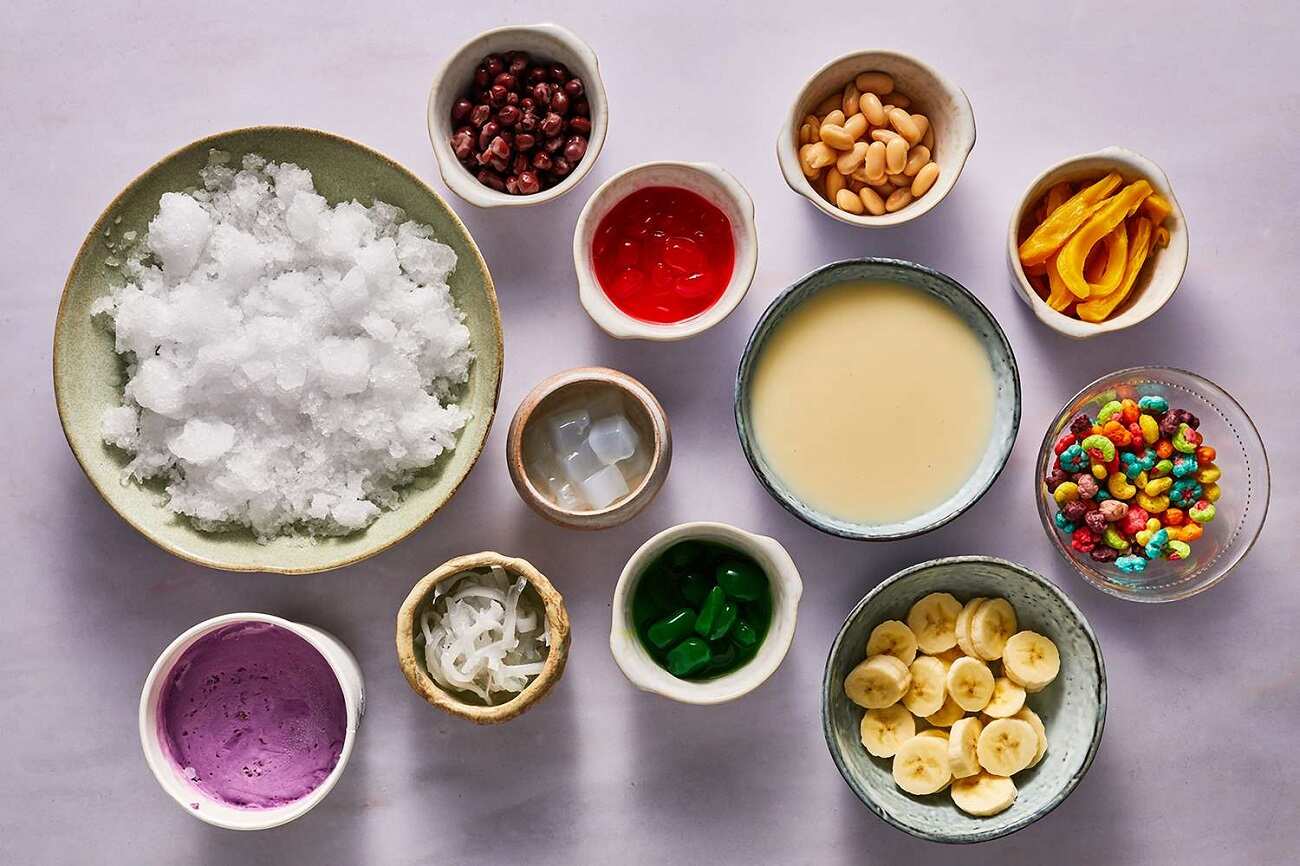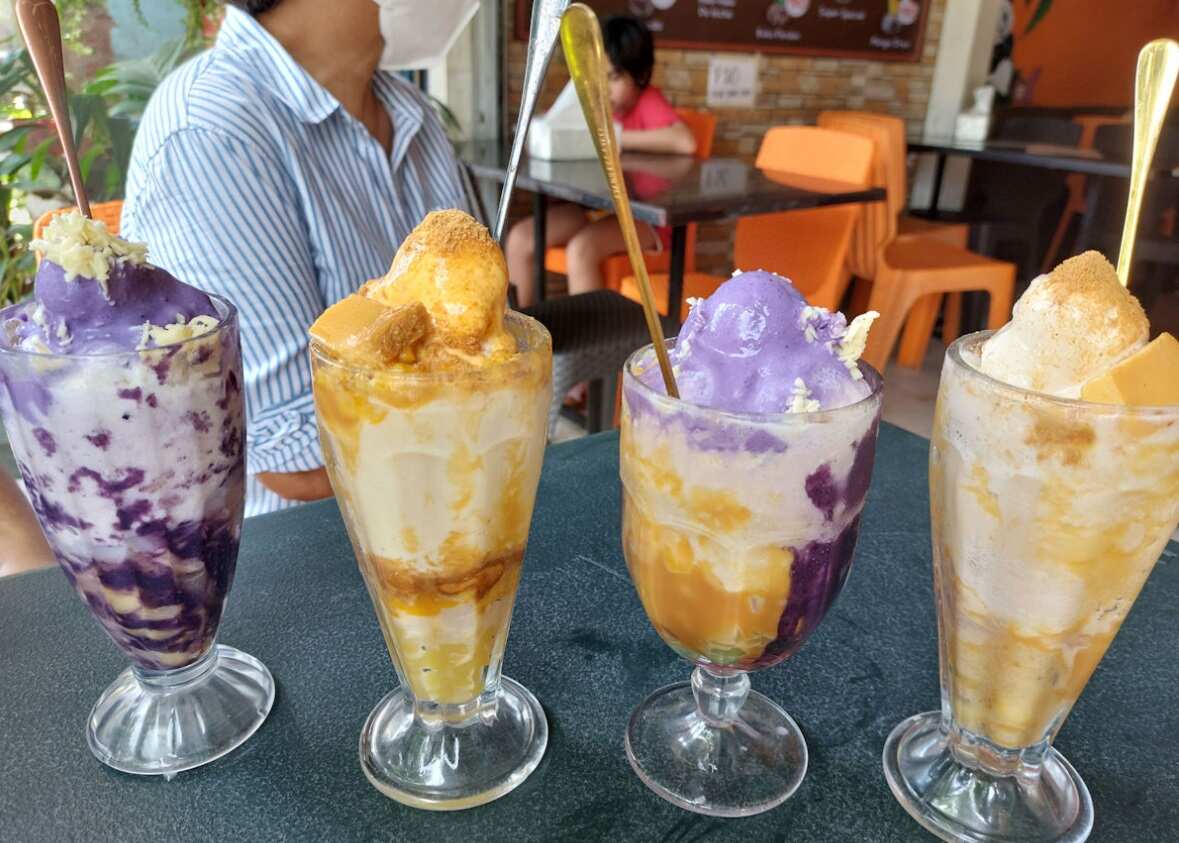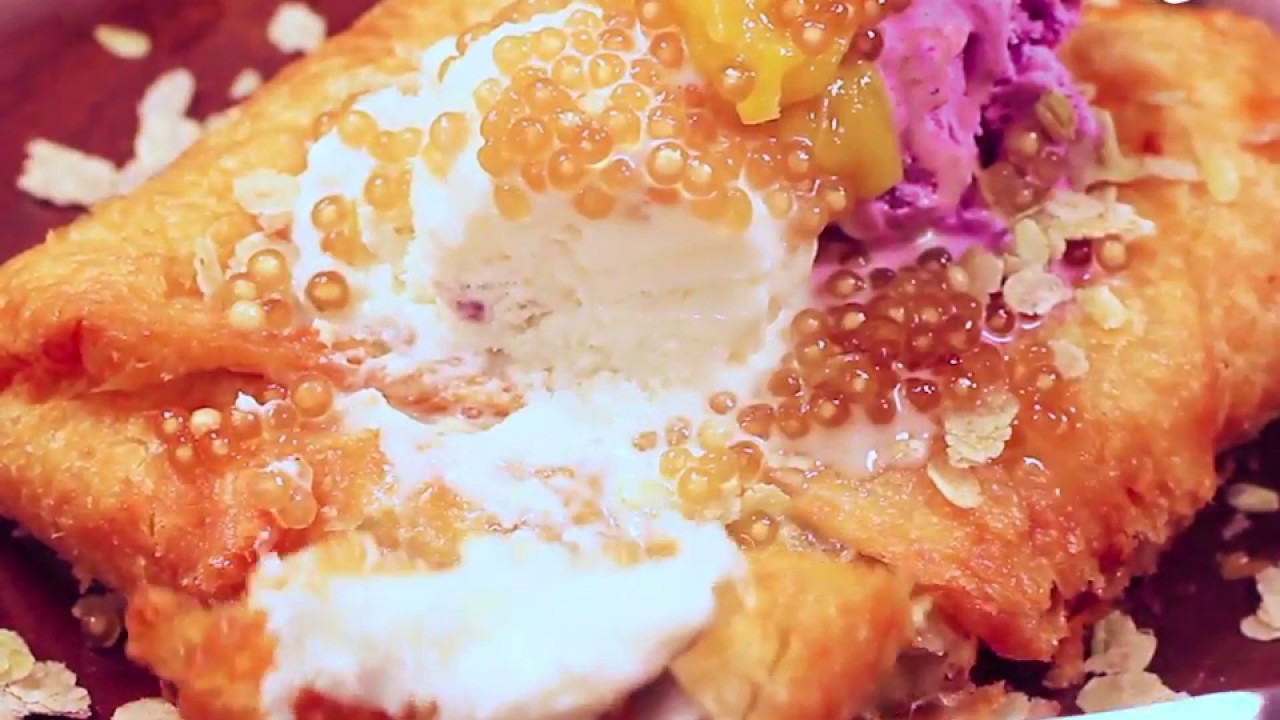
Halo-halo, a beloved and enduring dessert from the Philippines, is a delightful medley of flavors and textures. Its name, which translates to “mix-mix” in English, captures the essence of the dessert: a vibrant mixture of shaved ice, sweetened fruits, beans, jellies, and topped with leche flan, purple yam, and evaporated milk. This colorful and refreshing treat is not only a favorite among Filipinos but also a sought-after dessert by visitors, apart from other must-try Filipino dishes, especially during the sweltering summer months.
Halo-halo remains a popular choice for beating the heat due to its icy and creamy composition. The dessert offers a perfect blend of sweetness and refreshment, making it an ideal way to cool down on a hot day. Its enduring popularity can be attributed to its ability to cater to various tastes and preferences, with each spoonful offering a new combination of flavors and textures. Additionally, the cultural significance and nostalgic value of halo-halo make it a staple in Filipino cuisine, cherished by both locals and foreigners alike.
Origins of Halo-Halo

The origins of halo-halo can be traced back to the post-World War II era, a period of Japanese-Filipino ingenuity. After the war, Japanese immigrants introduced the concept of kakigori, a Japanese shaved ice dessert, to the Philippines. This dessert, consisting of finely shaved ice topped with sweet syrups, inspired the creation of halo-halo. Over time, the Filipino version evolved, incorporating local ingredients and flavors to create a unique and distinctly Filipino treat.
Making Traditional Halo-Halo

Creating a traditional halo-halo is a meticulous process that involves layering various ingredients to achieve its signature mix of flavors and textures. The dessert typically starts with a base of shaved ice, which is then generously topped with a variety of sweetened ingredients such as jackfruit, sweet red beans, kidney beans, macapuno (young coconut), nata de coco (coconut gel), and colorful jellies. A scoop of ube (purple yam) halaya and a slice of leche flan (caramel custard) are often added for extra richness. Finally, the concoction is drizzled with evaporated milk, and sometimes topped with a scoop of ice cream or a sprinkle of pinipig (pounded young rice) for added crunch.
To serve, the halo-halo is presented in a tall glass or bowl, showcasing its vibrant layers. The name “halo-halo” encourages diners to mix all the ingredients together before eating, ensuring that each bite is a delightful combination of flavors and textures.
Regional Variations

While the traditional halo-halo recipe is widely enjoyed, various regions in the Philippines have developed their own unique versions of the dessert. These regional variations highlight local ingredients and culinary traditions, adding a distinct twist to the classic halo-halo.
For instance, in the province of Pampanga and Bacolod, known for their rich culinary heritage, halo-halo often includes pastillas (milk candy), carabao’s milk, lots and lots of leche flan, adding a creamy and indulgent flavor. In the Bicol in the Visayas region, home to spicy cuisine, some variations of halo-halo incorporate a hint of chili, offering a surprising kick to the otherwise sweet treat. Meanwhile, in the southern region of Mindanao, durian halo-halo is a popular variant, featuring the distinctive flavor of the local durian fruit.
Related articles: Foods You Shouldn’t Miss When Visiting Bacolod, The Best Places to Live in the Philippines
Unique Flavors

Halo-halo has also inspired creative adaptations that cater to adventurous palates. Some of the unique flavors include:
1. Spicy Halo-Halo
This version incorporates spicy ingredients such as chili-infused jellies or a dash of chili powder, providing a tantalizing contrast to the dessert’s sweetness.
2. Durian Halo-Halo
Known for its strong aroma and creamy texture, durian adds a bold flavor to the halo-halo, making it a must-try for those who enjoy this exotic fruit.
3. Fried Halo-Halo
An innovative take on the classic, fried halo-halo features a deep-fried shell filled with traditional halo-halo ingredients, offering a crispy exterior and a refreshing interior.
4. Ice Buko Halo-Halo
This version highlights the flavors of buko (young coconut), incorporating coconut water ice and coconut strips, resulting in a lighter and more tropical taste.
Conclusion

Halo-halo has become an iconic symbol of Filipino culture and culinary creativity. Its legacy is rooted in its ability to adapt and evolve while remaining true to its origins. From its humble beginnings as a post-war adaptation of kakigori to its current status as a beloved national dessert, halo-halo continues to delight and refresh those who enjoy its unique blend of flavors and textures.
In summary, halo-halo is more than just a dessert; it is a celebration of Filipino ingenuity and cultural heritage. Its enduring popularity, both locally and internationally, speaks to its universal appeal and the joy it brings to those who savor it. Whether enjoyed in its traditional form or as one of its many unique variations, halo-halo remains a quintessential summer treat that embodies the spirit of the Philippines.
Related article: Filipino Food that Speak Summer
Click here for more articles about Food
–
Featured Image by Bon Appetit





